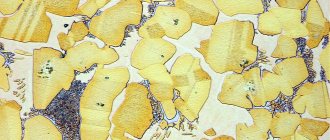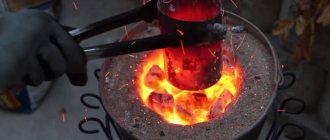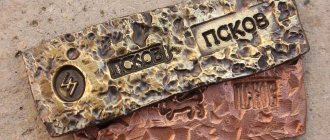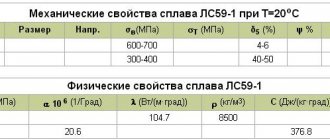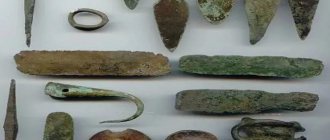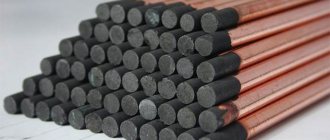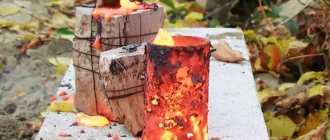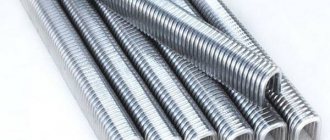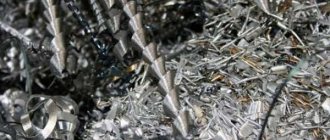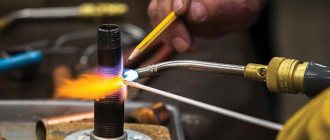An important event of the Bronze Age was the development of metallurgy, which resulted in the discovery of bronze. Some metals, especially tin, lead and copper, can be extracted from ores by heating rocks in a fire or blast furnace. A process known as smelting.
The discovery of bronze using existing metallurgical technologies revolutionized the production of weapons and works of art.
Bronze was originally used to make weapons. But soon metalworkers used this alloy to make art objects. One of the oldest and most common methods of making bronze sculptures is the lost wax process. In which hollow, unique sculptures are created in any form the artist chooses. Dancing Girl (c. 2500 BC) from Mohenjodaro in the Indus Valley, possibly the world's first bronze statue. Although she is in a standing position, she was named Dancing Girl. with an assumption about his profession. This is one of two bronze works of art found at Mohenjodaro. Which show more flexible features compared to other, more formal poses. The girl is naked, wearing several bracelets and a necklace, standing in a natural pose. She has her right hand on her hip and her left hand is holding some object that is resting on her thigh.
Dancing Girl (c. 2500 BC) : Bronze. 4 1/8" x 2". National Museum, New Delhi.
The Snetitsky culture arose at the beginning of the Central European Bronze Age (2300-1600 BC). The culture is distinguished by distinctive metal objects, including ingot torques, flat axles, flat triangular daggers, bracelets with spiral ends, disc and blade pins, and curling rings, which are common across a large area of Central Europe and beyond. An interesting mixed media object from this culture is the Nebra Sky Disc (c. 1600 BC), which consists of a blue-green patina inlaid with gold symbols. These symbols were usually interpreted as the sun or full moon, crescent moon and stars. Later, two golden arcs were added on the sides, indicating the angle between the solstices. The final addition was another arc at the bottom, surrounded by many strokes of uncertain meaning. Variously interpreted as a solar barge with many oars, as the Milky Way, or as a rainbow. The disc, probably made with a hammer, is an astronomical instrument as well as an object of religious significance.
Nebra Sky Disc (c. 1600 BC) : Bronze and gold.
Diameter 30 cm. Pergamon Museum, Berlin. Bronze "ore" can occur naturally. For example, where natural deposits of copper and tin occur together, but this is very rare. Historically, bronze could only be produced when trade allowed the exchange of copper and tin, metals or ores.
How is bronze formed?
Copper is produced from copper ore through a process known as smelting. This is heating the ore to a very high temperature and removing impurities. At this time, other alloy components can also be added to the molten copper, where they melt and combine with the molten copper. Nowadays this is done with extreme precision to ensure the consistency of the bronze. Because even small changes in the alloy "recipe" can result in very different physical, castability and aesthetic qualities.
Discovery of bronze
While doing this, it was impossible not to notice black, brown and reddish-brown pieces of the most important tin ore - cassiarite, or tin stone (Sn02). This, as well as observations of the properties of copper ores containing minor (up to 2%) tin impurities, led to an important discovery: the addition of tin to copper improves the metal's properties. This is how the first artificial alloy was invented - bronze.
Bronze has significant advantages over copper. It has a lower melting point, approximately 700-900°, higher casting qualities, and when cooled it has significant strength and hardness.
If copper tools were mainly forged, bronze ones were cast, which was of great importance, since this opened up the possibility of mass production of tools and weapons.
How has bronze been used throughout history?
Bronze was developed around 3500 BC. ancient Sumerians in the Tigris-Euphrates River valley. Historians are unsure how the alloy was discovered, but believe bronze may have been first produced by accident. When stones rich in copper and tin were used to create fire rings.
Around 3000 BC bronze production spread to Persia. Where bronze objects such as jewelry, weapons and chariot parts were found. Bronze appeared in Egypt and China around 2000 BC. The earliest bronze castings were made from sand. And this method is sometimes still used, even for casting bells.
At first, copper-arsenic alloys were used, but not for long. One of the disadvantages of this alloy was that the arsenic fumes released during smelting killed metalworkers.
In the end, tin proved to be the ideal alloying agent for copper. The optimal ratio of tin to copper is from 10 to 20%. The melting point of bronze is 950⁰C, compared to 1084⁰C for pure copper.
Items required to craft bronze
Armor and weapons that are made of bronze are guaranteed to be needed at any stage of the game: in particular, when fighting against the boss - the Ancient One. Crafting bronze involves consistent training, in particular:
- Creating a coal furnace, which will require: 20 units of stone, 5 surtling cores;
- Melting furnace. Required: 20 units of stone, 5 surtling cores;
- Forge, to create which you need to collect: 10 units of wood, 4 units of stone, 6 units of copper;
- Prepared copper ore to create copper ingots;
- Tin ore for creating tin ingots.
Note: Looking at the above requirements, it becomes clear why bronze is so valuable and why armor and weapons made from bronze are very effective.
Once all the components are collected, you will need to combine copper and tin ingots to craft bronze at the forge. However, before combining the ore, you will need to create a few more key items.
Surtling Core – where to find it.
Primitive resources like wood and stone are very easy to obtain when the Surtling Core is a rare item. You will need to put in a lot of effort and also expose yourself to little danger.
To craft a smelting and coal furnace, you will need to allocate a total of 10 units of surtilng cores. To search for cores, you should visit the burial chambers. Burial Chambers are small dungeons that can be found in the Black Forest biome. It is necessary to carefully explore the biome in search of the entrance to the dungeon: if you approach the entrance, the character is guaranteed to be attacked by skeletons.
Important: before entering, be sure to create a torch using 1 unit of wood and 1 unit of resin. This will allow you to light a light in front of you when wandering through dark dungeons.
Dungeons are a labyrinth fraught with darkness and danger: skeletons, countless mysterious doors. Finding a Surtling core is very easy - just pay attention to the glow-in-the-dark cores on small steel stands.
The end result will require exploring three or four dungeons to find 10 surtling cores - to create a smelter and charcoal furnace.
Modern objects usually made of bronze
During the Bronze Age, bronze was widespread because it was the hardest metal alloy. Bronze artifacts dating to this time period include tools, arrowheads and other weapons, building materials, and art. As the use of iron became more widespread, fewer everyday objects were made from bronze. But its use to this day testifies to its durability and versatility. Today we use bronze in a variety of applications, some of which are described below.
Bronze in Industrial Craft2
Bronze in Minecraft is a concept that includes dust, ingots and blocks (made from this material, of course). Dust is the basis from which other bronze items are crafted, so it is logical to first learn how to mine it. In order to make it, according to the old version, you only need tin and copper dust, which should be arranged like this.
The new option offers crafters an alternative. If you want, you can be content with only this recipe in Minecraft. If you want, you can use purified or crushed copper ore as a replacement for copper dust. You can also replace tin dust with purified or crushed tin ore. Yes, you can see everything in the illustration yourself.
If you already have an ingot, and you also have a crusher in your Minecraft closet, an additional recipe becomes available to you.
Having dust makes you practically a bronze tycoon in Minecraft - you can now smelt ingots. The image shows exactly how the melting process occurs.
Having learned how to make pigs, you have the right to ask a not entirely chronologically logical question: why do you even need bronze in Minecraft? Although, most likely, you yourself understand that you can do many useful things with its help. Yes, yes, it is possible. And here they are, things:
- Rails
- Composite ingot
- Wrench
- Helmet
- Leggings
- Boots
- Cuirass
- Bronze block
And once again illustration comes to our rescue. She demonstrates exactly how to craft these items in Minecraft.
A bronze block is crafted from nine ingots. Its only practical use is compact storage of material. As usual in Minecraft, if you need ingots, we crush the block, that is, we perform the reverse process.
Musical instruments
Bells and plates are often made of bronze; For bells, a special alloy called “bell metal” is used, which is made with a high tin content. Asian percussion instruments such as gongs and singing bowls are also made of bronze in a variety of compositions.
Bronze is also used in stringed instruments, including guitar, double bass and piano, to wrap steel and nylon strings. Bronze strings are used for lower pitched tones where they perform better than their high tensile steel counterparts.
Strings
Architectural bronze
Bronze has a variety of architectural uses, ranging from everyday objects such as letterboxes, furniture and stair railings, to more complex decorative elements such as decorative trim on doors and windows. Not only does this metal stand the test of time in these applications, but it is also available in a variety of colors, which also makes it desirable. Bronze, used in architecture, is an alloy consisting of 57 percent copper, 40 percent zinc and three percent lead.
Valheim: copper, tin, bronze, full guide
This guide will be useful both for those who have already acquired a supply of tin and copper, and for those who are going to acquire an advanced alloy from these ores. However, he doesn’t yet know how to do this or wants to understand the details in more detail.
The point is that if most of the resources can be easily found while traveling around the world of the game Valheim, then with bronze everything is far from so simple. Because here bronze, as in real life, must be created using components. In this regard, this material is devoted to how to find tin, copper in the game Valheim and subsequently create bronze ingots, which will be useful for further crafting recipes.
Helpful information! It is worth noting that from bronze it will be possible to create bronze equipment , which is extremely difficult to do without when the stage of the battle with the second boss comes - “The Ancient One” (this only applies to him, since all subsequent bosses require higher quality equipment). However, this is far from the only game situation when the need for bronze arises.
What does it take to craft bronze in Valheim?
- It is necessary to create and install a “Coal Stove”. For this you need stones (20 pieces) and Surtling cores (5 pieces);
- It is necessary to create and install the “Smelter”. This also requires surtling core stones in the same quantity as in the case of a coal stove;
- It is necessary to create and install the “Forge”. To do this you need wood (10 pieces), stones (4 pieces) and copper (6 pieces);
- And finally, you need to acquire all the necessary resources for bronze - these are tin and copper ore.
And as soon as everything you need is available, you can begin to combine ingots from tin and copper inside the forge, so that the result is bronze. However, before this, it is worth noting that you will also need to have an additional two stoves.
Where can I find and obtain surtling cores?
Of course, of all the above, the most puzzling are the so-called “surtling cores”. And in general, finding them is actually quite simple, but in some places getting them is extremely difficult. a novice Valheim player gets down to business without much experience or knowledge about the world of the game.
Helpful information! In general, 10 units of Surtling cores will be required in order to create a smelter, as well as a coal stove. This is important to note, since these buildings are key - without them it will not be possible to make metals. And even move further in the game, gradually progressing.
To search for surtling cores, the first thing in Valheim everyone will have to do is find the so-called “burial rooms”. They are dungeons - inside, and outside - a hill, which will be guarded by skeletons and have small stone structures.
Burial places are always located on the territory of the Black Forest. And before you decide to go there, you must have a torch with you (to create you need to have one resin and wood). Because it’s very dark inside and you can’t really see anything.
Well, the last thing to note: inside the burial plots there are winding corridors with wooden doors and enemies. Therefore, in order to find all the surtling cores (resemble externally glowing cubes), we recommend inspecting absolutely every room.
How to find tin and copper in Valheim?
As described above: copper and tin in Valheim must subsequently be smelted into the corresponding ingots, and then they must be combined inside the forge and turned into bronze. At the same time, there should be no problems with finding these ores.
How to recognize copper in the Black Forest?
Detecting copper is actually quite simple: to do this, you need to find a flat-shaped boulder in the territory of the Black Forest. And then move the mouse cursor over it. And if this is what you need, then the corresponding inscription will appear - “Copper Deposit”. Next, the character only needs to take out a pickaxe and mine the found ore.
How to recognize tin in the Black Forest?
But tin deposits can be found near the reservoirs of this biome. At the same time, they are also illuminated with a brighter glow. And the stones themselves give away the location of the tin. The rest is nothing new: you take out a pickaxe, break the ore, and accumulate it in your inventory.
How to create bronze in Valheim?
- When the character has: cores, copper and tin in his hands, it is necessary to create a furnace along with a smelter. By the way, a stove is also required to burn charcoal. But in any case, using copper and tin, you begin to melt the corresponding ingots;
- Using surtling cores (5 pieces) and stones (20 pieces), you need to create a coal stove, then place pieces of wood inside. So, as a result, the character will receive a valuable material - coal;
- Next, using the same resources, build a smelter. And then move the previously created coal to the right side of the smelter (meaning inside). In this case, you need to put ore on the left side of the interface. After a couple of seconds, you can pick up the finished bars;
- In this case, the very last thing you should build is a forge, since it requires a roof. But in any case, you will need to put one tin ingot and two copper ingots inside the forge. As a result, one bronze ingot will be created. So if a character has 5 tin ingots and 10 copper ingots, then it will be possible to create 5 bronze ingots at a time. The logic, we hope, is clear.
And in the end, you can begin to produce bronze armor, which will be useful during the battle with the second boss - the “Ancient One”.
Of course, this is not all, since in the vastness of the game you will also have to start creating iron and silver a little later. And crafting in Valheim is not as easy as it might seem. However, this guide only described the process of mining and producing bronze. Therefore, if you suddenly want to know more, we recommend that you read our other guides, for example, on the Valheim sunken crypts .
Click to rate this game!
[Total: 0]
Commercial bronze
It's hard to find an industry that doesn't use bronze! We use bronze products every day without even thinking about it. Bearings, bushings, screws, valves and countless other parts are made from bronze because of its strength, durability, corrosion resistance and ductility. Wrought alloys are available in the form of sheets and plates, tubes or rods and are produced by rolling mills, extrusion mills or forging mills. In contrast, cast alloys are produced by sand casting, centrifugal casting and continuous casting. This is the most affordable type of bronze alloy.
Features and Benefits
Bronze, which is a non-ferrous metal, is a copper-based alloy. Since ancient times, bronzes have been most widespread, the chemical composition of which, in addition to copper, contains tin. Instead of tin, various grades of bronze may contain elements such as beryllium, iron, aluminum, lead, silicon, etc.
The content of chemical elements in cast bronzes is regulated by GOST 493-79, 613-79
The high popularity that bronze has enjoyed for many centuries is explained by such advantages as:
- high hardness and strength when comparing this metal with copper (by the way, some grades of bronze, in particular beryllium, surpass even high-quality steel in their strength characteristics);
- lower melting point compared to copper;
- good fluidity in the molten state, which makes it possible to successfully use bronze for casting;
- exceptionally high corrosion resistance;
- wear resistance, which is maintained even during long-term use of bronze products under conditions of high friction.
Of course, bronze alloys also have disadvantages. Let us list the most significant of them.
- The not too high ductility of bronze limits the possibility of manufacturing products from it by plastic deformation (rolling, forging, stamping, etc.).
- Bronze, due to some of its characteristics, is poorly processed by cutting.
- Products made of bronze, in particular tools made from it, are difficult to sharpen.
Bronze is used for the manufacture of rubbing and heavily loaded parts that can work in fresh and sea water
By the name of a certain brand of bronze alloy, you can determine which element, other than copper, is included in its chemical composition. Thus, bronze containing tin is called tin, an alloy containing beryllium is beryllium bronze, aluminum is called aluminum bronze, etc.
As mentioned above, the most widespread are tin bronzes, which, due to the fact that bells were made and continue to be made from them, are often called bell bronzes. The classic composition of bronze alloys of this type contains 80% copper (±3%) and 20% tin (also ±3%). To give such bronze improved characteristics, alloying elements can be added to its composition - lead, nickel, arsenic and phosphorus.
Processing temperature and technological features of tin bronzes
Depending on its chemical composition, bronze can be single-component, in which only one additional metal is present, or multicomponent, with several additional elements. Naturally, bronzes, for the manufacture of which several elements were used, are distinguished by improved characteristics.
In the production of multicomponent alloys, a distinction is made between the concepts of primary and secondary bronze. The first type of alloy, often used as a raw material, contains only copper and tin. Primary bronze is used for the production of secondary alloys, for which the necessary alloying elements are added to it.
Bronze alloys (castings)
According to historical data obtained as a result of many archaeological excavations, bronze products began to be used by humans as early as the 4th millennium BC. It is no coincidence that a fairly long period in the development of mankind is called the Bronze Age. Those who today try to make anything from bronze at home are faced with the same problems as ancient man, who made products from it for various purposes.
Techniques for making bronze sculptures in Ancient Greece
The ancient Greeks and Romans have long made sculptures from bronze. Literally thousands of images of gods and heroes, victorious athletes, statesmen and philosophers filled temples and sanctuaries and stood in public places of large cities. For over a thousand years, Greek and Roman artists created hundreds of types of statues, whose influence on large-scale sculpture from Western Europe (and beyond) continues to this day.
Bronze mirror with stand in the form of a naked girl
In the third millennium BC, ancient foundries recognized through trial and error that bronze had distinct advantages over pure copper for making sculptures. Bronze is an alloy typically composed of 90 percent copper and 10 percent tin, and because it has a lower melting point than pure copper, it will remain liquid longer when filled into a mold. It also provides better casting than pure copper and has superior tensile strength. Although there were many sources of copper around the Mediterranean basin in Greek and Roman antiquity, the island of Cyprus, whose very name comes from the Greek word for copper, was one of the most important. Tin, on the other hand, was imported from regions such as southwest Turkey, Afghanistan and Cornwall, England.
Bronze Man and Centaur
The earliest large-scale Greek bronze statues had very simple forms, resulting from their manufacturing technique known as sphirelaton (literally "hammered"), in which parts of the statue were made separately from hammered sheets of metal and attached to one of them. the other with rivets. Often these metal sheets were decorated by applying bronze to wooden forms to create reliefs or carve designs using a technique called tracing.
Bronze Torso of Youth
By the Late Archaic period (ca. 500–480 BC), sfirelaton fell into disuse as a primary method, when lost wax casting became the primary method for making bronze sculptures. Bronze lost wax casting is done in three different ways: lost wax casting, direct lost wax casting and indirect lost wax casting. The first method, which is also the earliest and simplest, requires creating a model from hard wax. This model is surrounded by clay and then heated to remove the wax and harden it. Next, the mold is turned over and molten metal is poured into it. Once the metal has cooled, the smith opens the clay model to create an exact replica in bronze.
Since the physical properties of bronze prevent the casting of large solid pieces, the use of hard wax models limited the founder to casting very small figures. To solve this problem, the ancient Greeks used the hollow wax casting process to make large free-standing bronze statues.
Typically, a large sculpture was cast from several parts, such as the head, torso, arms and legs. In the direct hollow wax casting process, the sculptor first creates a clay core that is approximately the size and shape of the intended statue. Larger statues use reinforcement, usually made from iron rods, to stabilize the core. The clay core is then coated with wax and vents are added to facilitate the flow of molten metal and the escape of gases, ensuring an even casting.
The model is then completely coated with a rough outer layer of clay and then heated to remove all the wax, thereby creating a hollow matrix. The mold is reheated for a second, longer period of time to allow the clay to harden and burn off any remaining wax. The bronzer then pours molten metal into the mold until the entire die is filled. Once the bronze has cooled sufficiently, the mold opens and the bronze is ready for the finishing process.
With the indirect lost wax casting method, the original master model is not lost during the casting process. In this way, sections can be remade, a series of the same statue can be made, and large sculptures can be cast. Because of these advantages, most large-scale ancient Greek and Roman bronze statues were produced by the indirect method.
First, a model of the statue is made in the sculptor's preferred medium, usually clay. A clay or plaster mold is then made around the model to follow its shape. This mold consists of the minimum number of sections that can be removed without damaging the undercut modeling. After drying, the individual parts of the mold are removed, assembled and fastened.
Each segment of the mold is then coated with a thin layer of beeswax. After this wax has cooled, the cast is removed and the artist checks that all necessary details have been transferred from the master model. At this time, corrections and other details may be made to the wax model.
The bronzer then attaches a system of funnels, channels and vents to the wax model and covers the entire structure with one or more layers of clay. As with the direct method, the clay mold is heated and wax is poured. It is heated again to a higher temperature to fire the clay, and then heated again when pouring the molten metal. As this metal cools, the mold breaks away, revealing a cast bronze segment of the statue.
All protrusions remaining from the filler channels are cut off, and small defects are removed with abrasive. The separately cast parts are then joined together using metallurgical and mechanical means.
The skill of making these compounds in antiquity is one of the greatest technical achievements of Greek and Roman bronze working. In the finishing process, decorative details such as hair and other surface designs can be emphasized using cold chisel working. The ancient Greeks and Romans often added eyes inlaid with glass or stones, teeth and nails inlaid with silver, and lips and nipples inlaid with copper, all of which contributed to the amazingly realistic appearance of the bronze statue.
Since all but a few ancient bronze statues were lost or melted down to reuse the valuable metal, marble copies made during the Roman period provide our primary visual evidence of the masterpieces of famous Greek sculptors. Almost all of the marble statues in the Mary and Michael Jaharis Gallery at the Metropolitan Museum of Art are Roman copies of bronze statues created by Greek artists about 500 years earlier, in the fifth and fourth centuries BC.
Where to find copper and tin
Tin and copper are smelted into ingots, which are combined in a forge and turned into bronze.
Copper
Finding a copper deposit is simple: find a long, flat boulder in the Black Forest, then hover over your cursor and the words “Copper Deposit” will appear.
All that remains is to get the pickaxe, break the stone and get the ore.
Tin
Tin deposits are located near the reservoirs of the Black Forest: they are identified by stones that shine brighter than those around them, with transverse black stripes.
To get ore you need to break them with a pickaxe.
